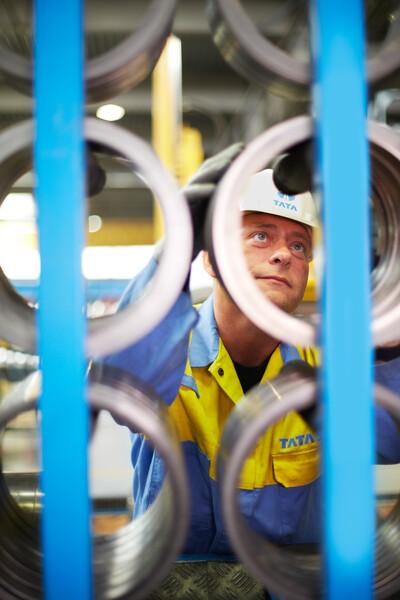When different parties – from those producing raw materials and manufacturing construction products, to those designing, delivering and managing buildings – all share their challenges and work together for a common goal, solutions can be found that will underpin the future of construction well beyond the net zero target date of 2050.
Data is a critical part of that communication and collaboration. The more data that can be gathered about construction products, the way they’re used, and how they perform when the building is in operation, the better the decisions we can all make about sustainability – including transitioning from the linear economy to the circular economy.
Circular economic principles should drive us to more than one product lifespan
Decarbonising construction in a responsible and sustainable way, taking into account the potential for unintended consequences, means assessing the complete life cycle of a building.
Traditional procurement and construction results in buildings that are essentially prototypes or one-offs, from which it’s difficult to carry learning to the next project. It’s possible to take steps to reduce the upfront carbon and the operational carbon of those buildings, but it’s rarely possible to adapt them later for other uses, or to disassemble them to reuse components.
This inability to prolong the life of construction products, or entire buildings, is inefficient, and it’s incompatible with a net zero industry.
A ‘platform approach to design for manufacture and assembly’ (P-DfMA) rethinks how buildings are designed and assembled (rather than ‘constructed’). It is a type of modern method of construction (MMC), and takes its inspiration from the automotive industry.
Construction platforms feature standardised kits of parts that can be assembled in a predictable and repeatable fashion – while still giving building designers freedom to create buildings of any type and style. Recognising that platform construction improves certainty and lowers risk , the UK government has made a commitment to procure construction platforms for publicly funded projects, which is helping to drive the development of different solutions.
Collaboration between the construction industry and government
A lot of the focus in construction is currently on reducing the operational carbon of buildings. Changes to national building regulations typically revolve around reducing carbon emissions relative to previous levels, ideally taking a fabric first approach that is supplemented by renewable technology.
There is also a desire to reduce the embodied carbon of the materials and products that go into buildings. This is an area not currently covered by building regulations, but which organisations like LETI and RIBA have set voluntary targets for.
Choosing materials with lower embodied carbon is very much an action that can be taken today. But, like all actions, the potential consequences of it must be taken into account. If a product must be replaced during the building’s lifetime and its replacement is sent to landfill when the building is no longer needed, was it really the most sustainable choice?
Circular economic products are the key to our sustainable future, as their useful life extends across multiple projects. Resource use is kept to a minimum as new products don’t need to be manufactured. Instead, the existing products can be maintained as necessary to assure their durability.
However, just because a component can be reused or remanufactured at the end of its life, doesn’t necessarily mean it will be. Buildings last a long time; often longer than we plan for. A design life of fifty or sixty years can potentially turn into a century or more.
How is somebody in fifty to one hundred years’ time supposed to know what to do with a product when it comes to disassembling or deconstructing a building, rather than demolishing it?
Using data to support a whole life view of construction
To help support the move to a more efficient and circular construction industry, it will be necessary to gather traceability data throughout the life cycle of products and components. This will mean ensuring that data is specific to individual products and situations (“product instances”), rather than generic to a range or family of products.
Data gathering starts at the manufacturing stage, capturing: the exact configuration of the product or component; its performance characteristics; the environmental impact of its manufacture (including whether an environmental product declaration is available); and how it was installed.
An increasingly important area of construction will be for manufacturers to gather data, via sensors, about buildings in-use. This will not only support a better understanding of operational carbon, but it will highlight where improvements can be made to products.
It will also indicate when maintenance is required to ensure that the expected performance continues to be delivered. The right data is essential to support the refurbishment of products during a building’s life, and their reuse at the end of that life.
There needs to be a record of how a component has been maintained, what its condition is, and how to remove it from the building. When that record exists, thanks to linked and traceable data, the product has value for the next project and is actually reused as part of a circular economy.
About Tata Steel and digital platforms
Thanks to nearly all steel being recycled, it is already a contributor to the circular economy. However, that circularity can be developed far beyond ‘just’ recycling through the development of digital platforms. It can help to create a safe, sustainable and interlinked construction industry.
Tata Steel has worked on a number of proofs of concept, including a system called ‘Tag and Track’. The aim, ultimately, is to deliver products with a permanent mark that can be scanned, and which links to a database of historical product data – a complete ‘materials passport’, generated in conjunction with, and linked across, the complete supply chain.
Disposal of products and components will become much less likely, and reuse as part of a circular economy will become much more likely. Data will therefore support the development and adoption of construction platforms as well, where the standardisation of products and systems can help drive future reuse marketplaces.
Tata Steel is also involved in initiatives that aim to prove the concept of construction platforms, and you can stay up to date on our modular construction activity by signing up to our newsletter.













































































































































































